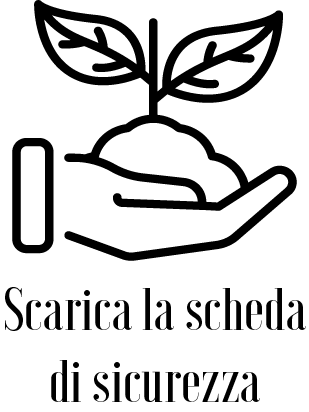2/3 mm (10 kg) dolomite grit
DOLOMITE GRAIN 2/3 mm (10 Kg).
The dolomite is a rock made up of double calcium and magnesium carbonate which is obtained by marine sedimentation of the aforementioned atoms.
MEDIUM CHEMICAL ANALYSIS
Calcium (CaO): 30.2%;
Magnesium (MgO): 21.2%;
Carbon dioxide (CO2): 47.1%;
Sulphates (SO4): traces;
Silica (SiO2): 1.3%;
Silica lib. Crist. (SiO2); na - inf. at 0.2%;
Fe (Fe): 1223 mg / kg;
Aluminum (Al): 172.0 mg / kg;
Manganese (Mn): 73.4 mg / kg;
Sodium (Na): 49.7 mg / kg;
Potassium (K): 57.4 mg / kg;
Barium (Ba): 47.7 mg / kg;
Lead (Pb): <30 mg / kg;
Copper (Cu): <5 mg / kg;
Cadmium (Cd): <3 mg / kg;
Arsenic (As): <1 mg / kg.
TECHNICAL FEATURES
pH at 50 g / l H2O (T 20 C): 9;
MELTING TEMPERATURE: 825 C;
SOLID DENSIT (T 20 C): 2.7 g / cm3;
SOLIBILITY IN WATER (T 20 C) : almost insoluble.
FUNCTIONAL CHARACTERISTICS AND FIELDS OF USE
Natural inert material, ideal for:
? to create substrates for plants that need carbonate in the substrate;
? with gypsum (1 part of gypsum and 3 parts of marble) if you want to create acid reaction in the substrate with also release of magnesium ions;
? decorative if placed above the root system of potted plants or on the ground;
Mulch flower beds or garden areas where you want to avoid the growth of herbs or weeds.
NB: NEWS ON PACKAGING
It should be noted that the product will arrive inside a bag (with a total weight of 10 kg, as specified in the title of the advert) labeled and packaged, according to the terms of the law, by the employees of Geosism & Nature sas
NB: WARRANTIES
Geosism & Nature sas certifies that the rock sold in this listing is totally natural and has not undergone any type of chemical treatment that could in any way pollute the soil or the crops with which it is put in contact. For the same reasons, Geosism & Nature sas is not responsible for any changes in color of the stone due to the climatic conditions of the place (rainfall, humidity, snow and / or frost) or to any fertilizations or irrigations made with particularly aggressive water or which they present elements in solution that can, in some way, alter the chemistry - and therefore the coloring - of the rock itself (e.g. carbonates in general, salts, iron, manganese, molybdenum, heavy metals in general, etc ...). Remember that all the stones that do not undergo chemical treatments, can absorb water and with it the previously mentioned elements.









